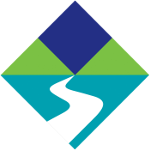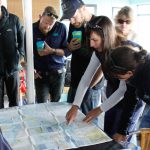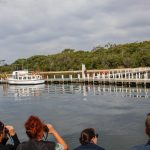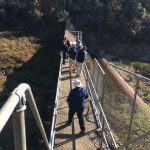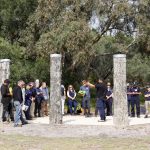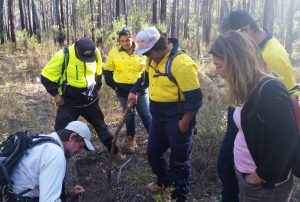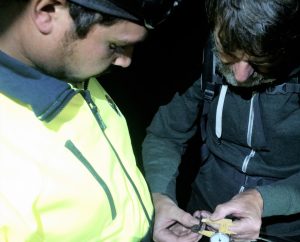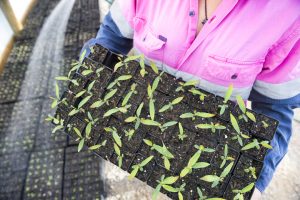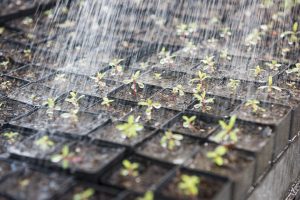
The Marlo Angling Club played host to local community members last Monday as Dan Stoessel from the Arthur Rylah Institute (ARI) presented his study – Snowy River, Then & Now.
The study, commissioned by the East Gippsland Catchment Management Authority and funded through the State Government’s environmental water program, sought to understand the changes to the river system over the last one hundred years.
The audience heard about what those changes mean for the health of the river and for the communities who rely on it. There was good discussion about the natural processes of the catchment, the impacts of climate change and the recruitment of native fish populations within the estuary.
“Undertaking these studies helps us gather information around the processes happening within the river system” said Bec Hemming, Programs Manager at the EGCMA. “ARI’s work helps us and the community understand the changing face of the catchment and provides an insight to better target future works by the EGCMA together with our partner agencies, the community and Landholders.”
Graeme Dear, CEO of the EGCMA said, “The Water Plan for Victoria seeks involvement from communities to improve our rivers. This forum is a great example of people and groups working together.”
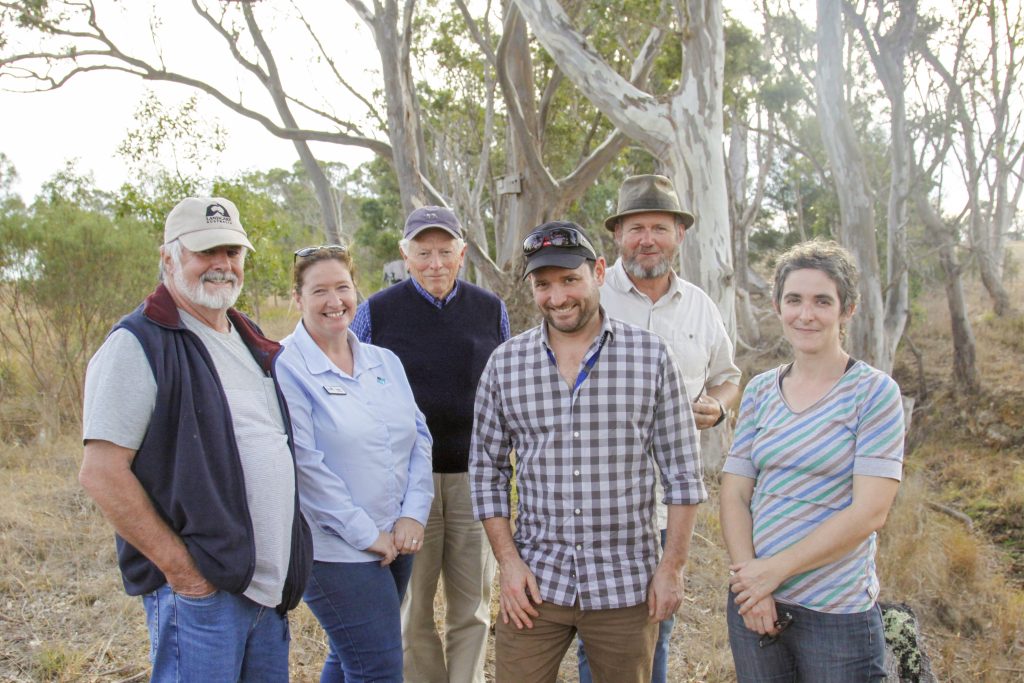
Community projects were the focus of a bus tour last week as staff from the East Gippsland Catchment Management Authority (EGCMA) visited four Landcare groups with the Authority’s Community Programs Committee. The day was an opportunity to review current projects and to meet Landcare volunteers who continue to roll up their sleeves to get things done.
The EGCMA administers the Victorian Landcare Grants, Regional Riparian Action Plan Grants and the National Landcare Programme Community Grants on behalf of the state and federal governments each year. The Community Programs Committee is made up of natural resource management agency representatives and community members who review and assess grant applications and recommend which projects should be funded.
The tour began on the East Gippsland Rail Trail at Nicholson. Meryl Wright and Michael Oxer, from the Nicholson River Landcare Group, spoke about their current project to build a new walking path from the rail trail to the river and the importance of the rail trail to the township.
In Bruthen, the long term vision for the Loop Walk project was explained by Geoff Williams from Bruthen & District Landcare Group. The Committee noted the challenges in revegetating an area as flood prone as the banks of the Tambo River.
A stop along the Mitchell River enabled Paul Harvey from the East Gippsland Landcare Network (EGLN) to inform the Committee of EGLN’s involvement with the grants process and also review the progress of recent planting by the Bairnsdale Urban Landcare Group.
Finally, Alistair Mailer from the Romawi Landcare Group discussed the need to stabilise erosion points along Forge Creek and the importance of regular water quality monitoring given the creek flows directly into the Gippsland Lakes.
“Our Landcare and community groups are actively involved in caring for the environment” noted Graeme Dear, CEO of the EGCMA. “And it’s great that both the federal and Victorian Governments are supporting community group partnerships such as these.”
The State Government has recently opened the Victorian Landcare Grants for 2018-19 with grants of up to $20,000 available. If you are a member of a Landcare or environmental volunteer group with a great idea for a project on your patch then you should consider applying. Applications close on Tuesday 12th June, for more information please visit the East Gippsland Catchment Management Authority website.
The Victorian Landcare Grants support the implementation of Protecting Victoriaʼs Environment – Biodiversity 2037, the state governmentʼs long-term plan to protect the environment.
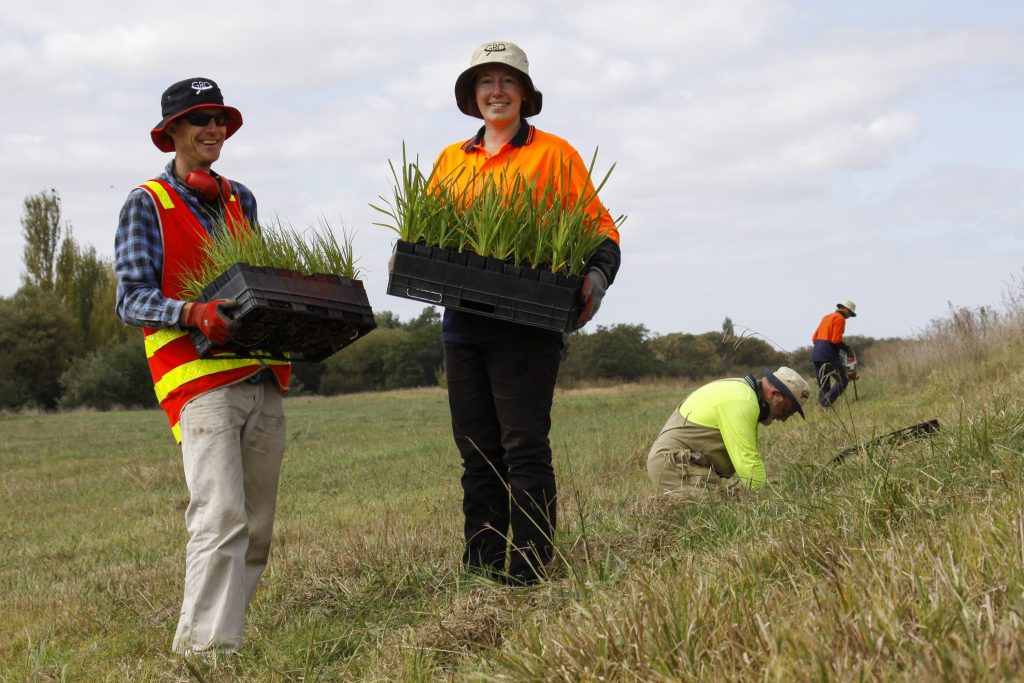
The East Gippsland Catchment Management Authority (EGCMA) has recently commenced a project on the Mitchell River flats around Lindenow to encourage a resilient environment on the flood prone area.
Working in partnership with the East Gippsland Food Cluster, weed control will be undertaken and native seedlings planted along the flats, two sites on the river and one site on Skull Creek below the township of Lindenow.
The rich soils of the Mitchell River flats plays a vital role in the vegetable growing industry of East Gippsland, but they can be vulnerable to damage during flood events when rising waters inundate crops.
Works on these sites will help establish native vegetation and stabilise the river banks reducing, the effects of flood damage including erosion and the movement of sediment downstream to the Gippsland Lakes.
“The health of our river systems is a priority for the agriculture industry.” said Bec Hemming, acting chief executive officer at the EGCMA. “We enjoy a productive relationship with the Food Cluster and continue to work together to support a healthy catchment.”
This project is funded by the Victorian State Government as part of $222 million committed to improving the health of waterways and catchments in Victoria.

The East Gippsland Catchment Management Authority (EGCMA) last week played host to staff of seven Catchment Management Authorities from across the state as part of the East Gippsland CMA Knowledge Sharing Forum.
Members of the West Gippsland, Corangamite, Wimmera, Goulburn Broken, North East and North Central CMA’s gained an understanding of East Gippsland’s unique natural environment and the challenges and opportunities in maintaining and enhancing the health of our catchments.
The group visited the Mitchell River Silt Jetties, the mouth of the Tambo River, the Nicholson Dam and took a boat trip to view works across the Gippsland Lakes. EGCMA partners Birdlife Australia, DELWP, Friends of Beware Reef, Gippsland Ports, Greening Australia, Gunaikurnai Land and Waters Aboriginal Corporation (GLaWAC) and The Marine Mammal Foundation, all spoke passionately about their respective projects.
A particular highlight was the smoking ceremony performed by GLaWAC JM Ranger Supervisor, Grattan Mullet Jnr at Sperm Whale Head and the opportunity to learn about the joint management of ten parks and reserves by GLaWAC and Parks Victoria.
“This event was a great opportunity to showcase our partnerships throughout the region.” said Becky Hemming, acting EGCMA chief executive officer. “Sharing of knowledge and experiences with CMA staff from around the state will contribute to better relationships and a better understanding of how to improve the health of our rivers and waterways.”

The Gunaikurnai Land and Waters Aboriginal Corporation (GLaWAC) NRM crew have been busy at the mouth of the Tambo River recently, undertaking a fencing project at the popular site.
Working in partnership with the EGCMA and DELWP, the works will establish clear public access points to the well known fishing spot.
These works are part of a coordinated effort to improve the health of the Tambo River together with public access and amenity of five popular sites from Ensay downstream to the mouth of the river.
Daniel Miller, On Country General Manager at GLaWAC said “Caring for country is one of the core roles of GLaWAC. Our NRM team are proud to be working on country in partnership with DELWP and EGCMA to achieve this common goal”.
“The Water Plan for Victoria encourages greater involvement of traditional owners in the management of our rivers.” said the acting EGCMA CEO, Bec Hemming. “Working together with DELWP and GLaWAC provides opportunities to build and share skills and cultural knowledge.”
The project is funded by the Victorian State Government as part of $222 million committed to improving the health of waterways and catchments in Victoria.
The Snowy was a hub of activity last weekend as the East Gippsland Catchment Management Authority (EGCMA) hosted a community paddle down the river.
With support from the crew at Snowy River Expeditions, paddlers travelled downstream from the Highway Bridge at Orbost, passed leaping mullet and under the watchful gaze of a pair of whistling kites before returning to Forest Park for a picnic lunch.
Ken Judd, Operations Manager at the CMA spoke about the history of the area and improvements to the river’s health. “The local landholders, community groups and government agencies have been working together for a decade now to improve the health of the Snowy River; it’s nice to be able to showcase to our community the improvements made. ”
The event was part of the Snowy River Rehabilitation Project funded by the Victorian State Government.
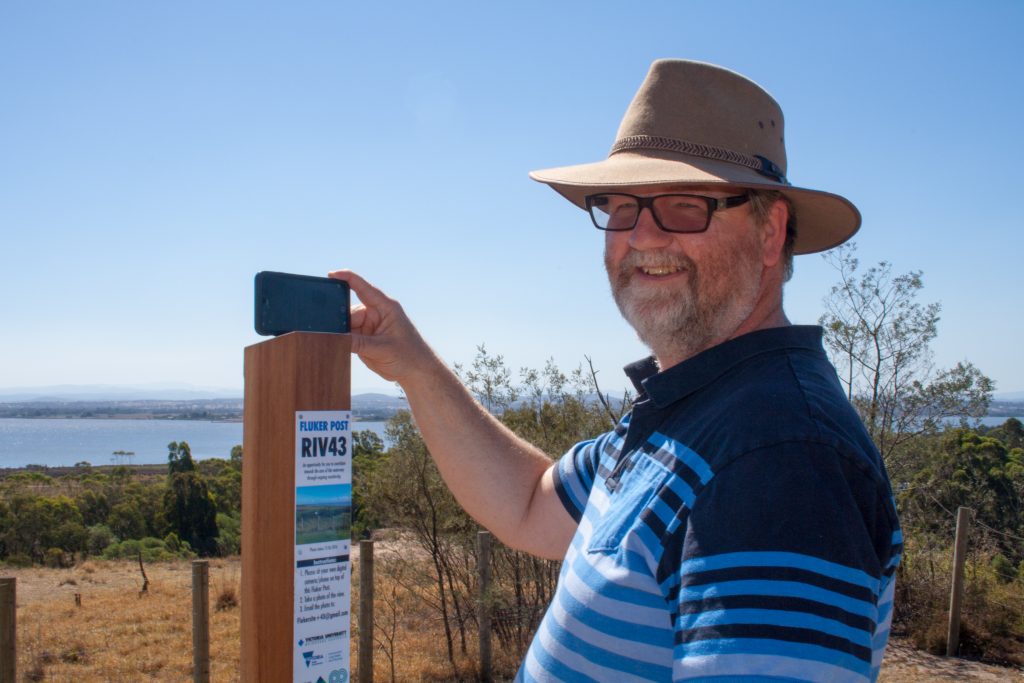
Citizen science in East Gippsland is now as easy as taking a photo thanks to the installation of five ‘Fluker Posts’ across the region.
The posts have been installed by the East Gippsland Catchment Management Authority (EGCMA) in partnership with DELWP and Victoria University to encourage the community to capture photos of the waterways and landscapes they love and enjoy.
Strategically placed on the highway bridge at Cann River, the West Cann bridge, Eagle Point Bluff and overlooking the estuary openings at Lake Tyers and Marlo, each post contains a a fixed photo-point where visitors are encouraged to place their smartphone, take a snap and send it to a listed email or upload it directly through an app.
The photographs can then be used to monitor the changing state of the environment over time. The Fluker Post Project allows the community to directly contribute towards the ongoing care and monitoring of our environment.
Graeme Dear, the EGCMA CEO, thinks that the fluker posts are a great way to get people thinking about the environment. “The Water Plan for Victoria encourages communities to get out and explore and enjoy the natural environment. This is such a simple concept but a fantastic way for people to get involved and provide valuable data at the same time.”
The project is funded by the Victorian State Government through the $30 million Regional Riparian Action Plan, which is part of the $222 million committed to improving the health of waterways and catchments in Victoria.

The carpet of wildflowers may be gone for another year but in the Alpine National Park nature lovers are still looking for adventure on the many walking tracks that the high plains have on offer.
Last week the East Gippsland Catchment Management Authority (EGCMA) began willow control works on a 340 hectare area surrounding alpine wetlands on the plains including sites at JB Plain, Precipice Creek and Mayford.
The works compliment those being undertaken by Parks Victoria to protect six known sites that are home to fragile alpine wetlands known as sphagnum bogs.
The primary focus of the willow control is to protect the Alpine Bogs from infestation by highly invasive willows and to stop the willows from spreading throughout the catchment.
The combined efforts of Parks Victoria and the EGCMA help to protect the Alpine Wetlands for locals and visitors to enjoy for years to come.
This project is funded by the Victorian State Government.

The Gunaikurnai Land and Waters Aboriginal Corporation (GLaWAC) NRM crew recently undertook training on a forested site north of Bairnsdale. The day provided an opportunity to gain skills and share knowledge about the biodiversity of our local region.
The training was delivered by the East Gippsland Rainforest Conservation and Management Network with funding administered through the East Gippsland Catchment Management Authority (EGCMA). It was designed to promote an understanding of techniques used in the detection and monitoring of forest dwelling species such as gliders, owls, bandicoots, reptiles and bats.
The importance of people working together was highlighted by the EGCMA chief executive officer, Graeme Dear. “It’s fantastic to be able to draw on and share the knowledge and experience of people in our region. Collaborations like this demonstrate how well our community works together to protect our environment.”
The project was funded by the Federal Government through the National Landcare Program.
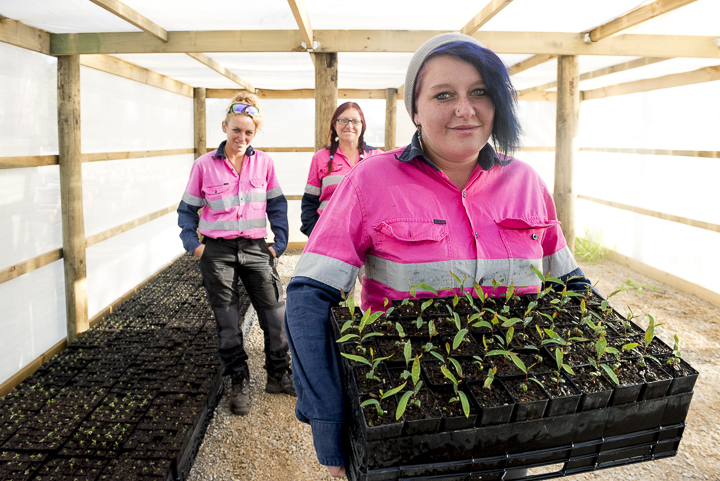
In a little nursery in Orbost, the Moogji Aboriginal Council have been growing big ideas.
The greenhouse was recently built to raise seedlings to plant along the banks of the Snowy as part of the Snowy River Rehabilitation project, administered by the East Gippsland Catchment Management Authority (EGCMA).
“We’re using seed collected from the same sites we’ll plant them back in to” explains Bianca McLaren from the Moogji works crew. “It’s quick and easy to collect the seed when we’re working by the riverbanks.”
The Moogji Aboriginal Council has a long working relationship with the EGCMA and other partner agencies. Graeme Dear, CEO EGCMA said, “involving aboriginal people to improve the health of our rivers is a key priority of the Water Plan for Victoria.”
Developing the greenhouse compliments the work they have been undertaking on the Snowy River Project and allows the organisation to continue to diversify.
This initiative has been established to involve young people, and the broader Aboriginal community, in growing plants as a pathway into upskilling and employment.
Latia LeSage has just started year 10 but spent her summer holidays doing work experience at the greenhouse helping to prepare and plant the seedlings. “I don’t have a green thumb at all but I enjoy the work.” she said. “I like to come and plant the seeds and it’s pretty cool to see them starting to grow”
“Growing plants is good for your soul” said Bianca. “If we can provide on the job experience knowing that it’s going to have a direct impact on the river we live near then everyone benefits”.
